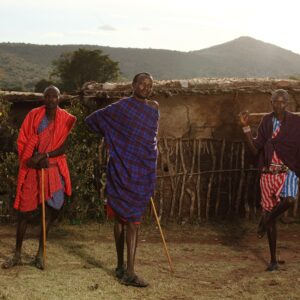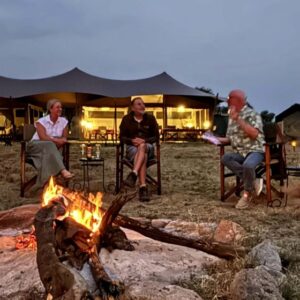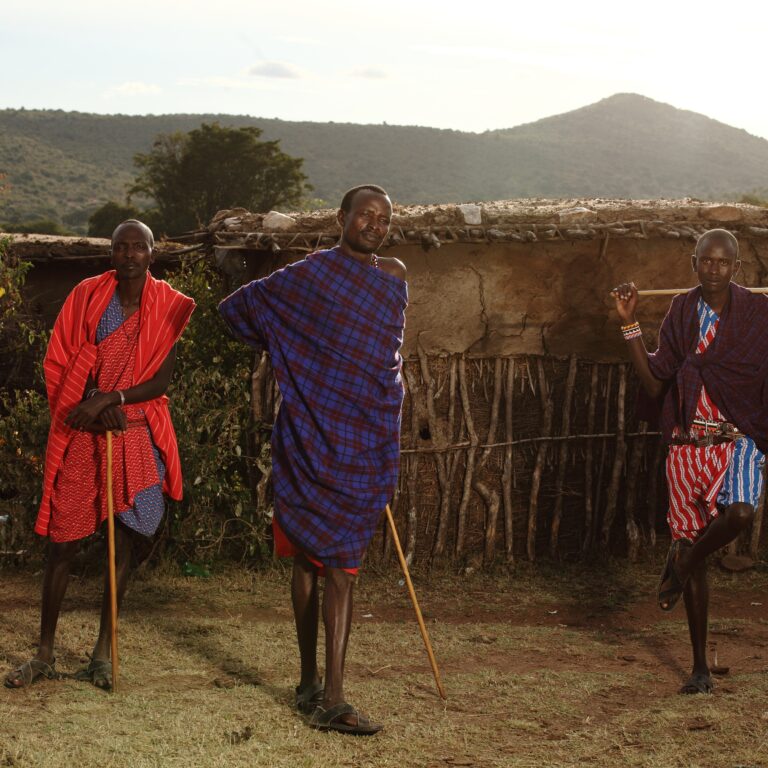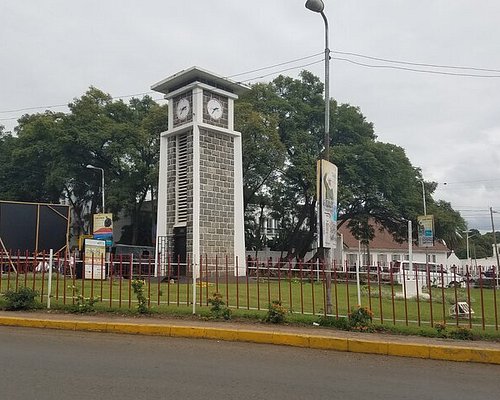Mount Kilimanjaro, Africa’s towering monarch, far more than just a geological marvel or a challenging trekking destination. For centuries, this magnificent peak has been deeply woven into the fabric of the local communities residing on its fertile slopes, particularly the Chagga people. Its imposing presence, life-giving waters, and often mysterious summit have fostered a rich tapestry of cultural significance. Spiritual beliefs and practical livelihoods make it a living entity in the hearts and minds of Tanzanians. Mount Kilimanjaro holds significant cultural and spiritual importance. Particularly for the Chagga people, who live on its slopes. It’s seen as a sacred place, a source of life, and a dwelling place of the Supreme Being in their beliefs. The mountain’s cultural significance. Also reflected in its role in folklore, traditions, and as a symbol of national pride for Tanzanians.
Sacred Space: A Realm of Ancestors and Deities
For the indigenous communities living in its shadow, especially the Chagga, Mount Kilimanjaro is considered a sacred space. It’s not merely a mountain but a revered entity. Believed to be the dwelling place of ancestral spirits and powerful deities. The higher, often cloud-shrouded peaks, regarded as particularly holy. A meeting point between the physical world and the spiritual realm. This deep reverence translates into a respectful approach to the mountain. Often accompanied by specific customs and unspoken rules. Some beliefs suggest that disrupting the mountain’s natural state. Such as harming its sacred snow and ice could anger the resident spirits and bring misfortune.
Spiritual Significance: A Source of Power and Guidance
The spiritual significance of Kilimanjaro is profound and multifaceted. For many, it embodies a source of immense power and energy. The Chagga people, in particular, believe the mountain its inhabited by both benevolent deities and the spirits of their ancestors, who act as protectors and ensure the balance between humans and nature.
One of the most prominent deities associated with Kilimanjaro its Ruwa. A powerful yet benevolent god linked to the sun, rain, and the natural elements essential for life on the mountain’s slopes. Ruwa believed to reside within the mountain. Providing the rains that nourish crops and the warmth that sustains life. Conversely, disrespect shown to the mountain or its land can lead to punishment. Often manifesting as droughts or crop failures. The mountain thus acts as a moral compass, ensuring respect for the environment and traditional ways.
For some, a climb up Kilimanjaro transcends a physical challenge to become a profound spiritual journey. Symbolizing personal growth, transformation, and enlightenment. The struggles faced during the ascent mirror life’s obstacles, and reaching the summit represents overcoming adversity and achieving one’s goals. Many climbers report a sense of contemplation and self-reflection amidst the mountain’s serene environment, fostering a deeper understanding of themselves.
Cultural Practices: Rituals of Respect and Sustenance
The cultural practices of the communities surrounding Kilimanjaro, deeply intertwined with the mountain’s influence. Before significant undertakings, such as planting crops, beginning a hunt, or even embarking on a climb. Locals may perform rituals and ceremonies to honor the mountain’s spirits and seek blessings. These can include offerings of milk, traditional beer (like ‘mbege’). Or grains, symbolizing gratitude and respect for the life-giving forces emanating from the mountain. The Chagga, known for their advanced agricultural practices. They have developed intricate irrigation systems using the mountain’s abundant water sources. A testament to their long-standing relationship with Kilimanjaro. Their traditional homesteads and farming methods, particularly coffee and banana cultivation, deeply rooted in the fertile volcanic soil nourished by the mountain.
Symbol of Pride: A National Icon
Beyond local significance, Mount Kilimanjaro stands as a towering symbol of national pride for Tanzania. Its Africa’s highest peak and the world’s tallest free-standing mountain. Making it an undeniable national treasure. Its image is emblazoned on national emblems, currency, and promotional materials, representing the nation’s strength, resilience, and natural beauty. For Tanzanians, Kilimanjaro its a source of inspiration, a reminder of their country’s potential, and a point of unity among its diverse ethnic groups.
Mount Kilimanjaro holds deep spiritual significance for many, particularly the indigenous communities near its base. Those who view it as a sacred space inhabited by spirits and deities. It’s seen as a connection between the earthly and divine realms, with the mountain itself often associated with ancestral spirits and a source of blessings and protection. For climbers, it can be a symbol of personal growth, a connection to nature, and a transformative journey. Mount Kilimanjaro is considered a natural wonder due to its impressive height, diverse ecosystems, and unique geological features. It’s the highest mountain in Africa, a dormant volcano, and one of the Seven Summits. It has made it a prominent natural landmark and a popular destination for climbers and nature enthusiasts.
Interwoven with Livelihoods: A Mountain of Sustenance
The cultural significance of Kilimanjaro is not merely abstract. It’s intricately interwoven with the livelihoods of millions. The fertile volcanic soils on its lower slopes, enriched by its geological activity, support a thriving agricultural economy. The Chagga people, renowned for their coffee and banana plantations. This has historically made them one of Tanzania’s most economically influential ethnic groups. Mountain also provides essential resources like timber, medicinal plants, and, most crucially, water. Its glaciers and rainforests act as vital water towers, feeding rivers and streams that sustain communities, agriculture, and even hydroelectric power downstream.
Furthermore, Kilimanjaro’s status as a global tourist destination directly impacts local livelihoods. Thousands of Tanzanians work as guides, porters, cooks, and support staff for the climbing industry. Providing essential income for their families and contribute significantly to the regional economy. This direct economic link reinforces the mountain’s importance in daily life.
Rich Folklore: Tales of Guardians and Wonders
Kilimanjaro its steeped in a rich tapestry of folklore, myths, and legends passed down through generations. These stories often reflect the local communities’ understanding of the mountain’s power, its unpredictable nature, and its spiritual essence. One prevalent figure in Chagga folklore Njaro. Sometimes described as a powerful guardian spirit of the mountain, or in other versions, a malevolent entity responsible for causing sickness (what we now recognize as altitude sickness) in those who disrespect the mountain or venture too high. These tales served as ancient warnings, imparting lessons about humility, respect for nature, and the dangers of the high altitudes.
Legends also explain the mountain’s origins, its snow-capped peak, and the presence of mythical beings like the “Wakonyingo,” mysterious dwarfs believed to live in caves beneath its slopes, guarding its spiritual purity. These stories add an air of mystique and wonder to the mountain, captivating both locals and visitors alike.
Festivals and Ceremonies: Celebrating the Mountain’s Bounty
Throughout the year, local communities around Kilimanjaro engage in festivals and ceremonies that celebrate their cultural heritage and their deep connection to the mountain. These events often coincide with agricultural cycles, honoring the mountain for bountiful harvests and seeking continued blessings. They feature traditional music, vibrant dances, storytelling, and communal feasts. While not exclusively for Kilimanjaro, events like local market days also serve as cultural hubs, where traditions are shared, and the rhythm of life, intrinsically linked to the mountain’s seasons and resources, continues. For climbers, engaging with these cultural experiences – through village visits or observing local customs – enriches their journey. Transforming a physical ascent into a profound immersion in the heart of Tanzanian culture.
Which best explains why there is so much folklore about Mount Kilimanjaro Apex?
The most accurate explanation for the abundance of folklore surrounding Mount Kilimanjaro Apex is that the local people depend on the mountain for water resources, as its glaciers and snowmelt feed rivers and streams vital for their survival and agriculture. This dependence creates a deep cultural and spiritual connection, leading to the development of numerous stories and legends about the mountain.
What is the mythology of Mount Kilimanjaro?
The mythology of Mount Kilimanjaro primarily revolves around the belief that it is a sacred dwelling for deities and ancestral spirits, especially among the Chagga people. According to these legends, the mountain is seen as a source of life, with spirits guarding its peak and the mountain itself acting as a powerful, sacred being. Myths often explain the mountain’s features, such as its snow-capped peak, and serve as warnings about the dangers of disrespecting the mountain or climbing too high.
What narratives and enigmas does Mount Kilimanjaro conceal?
Mount Kilimanjaro conceals narratives of sacred beings, such as the guardian spirit Njaro or the divine Ngai for the Chagga people, and enigmas surrounding its volcanic origins and disappearing glaciers. The mountain is seen as a source of life, a dwelling place for deities, and a site of both spiritual power and potentially dangerous forces. The rapid melting of its iconic glaciers adds a modern enigma related to climate change.
What does Kilimanjaro’s name mean? Why was it given to the mountain?
The meaning of “Kilimanjaro” is debated, but popular theories suggest it comes from the Swahili words “kilima” (hill/mountain) and “njaro” (whiteness), meaning “Shining Mountain” or “White Mountain”. Other interpretations include the Chagga-related meanings “Mountain of Greatness,” “Impossible Mountain,” or “Mountain Where Caravans Fail,” referencing the mountain’s imposing size and historical challenges for travelers.
What is the spiritual significance of Mount Kilimanjaro?
Mount Kilimanjaro holds deep spiritual significance for local communities, particularly the Chagga people, who consider it a sacred home for ancestral spirits and deities. For many, it is a site of spiritual pilgrimage and a symbol of national pride, representing a connection between the earthly and divine realms. Additionally, the challenging climb is seen by many climbers as a profound spiritual journey of personal growth, perseverance, and self-discovery.
What is the mystery of Mount Kilimanjaro?
The main “mysteries” of Mount Kilimanjaro are its name’s unclear origin and the shrinking of its iconic glaciers, which is a scientific puzzle. The name has several theories, none universally accepted, adding to its mystique. Scientists are also still trying to understand the exact process by which its unique giant groundsel plants evolved and dispersed to other mountains.
In conclusion:
Mount Kilimanjaro’s significance transcends its geological grandeur. Its a deeply cherished sacred space, a wellspring of spiritual belief. A vital economic provider and a perpetual source of folklore and cultural pride for the people of Tanzania. Its presence shapes their identity, sustains their lives, and inspires their spirits, making it an indispensable part of their cultural heritage.








